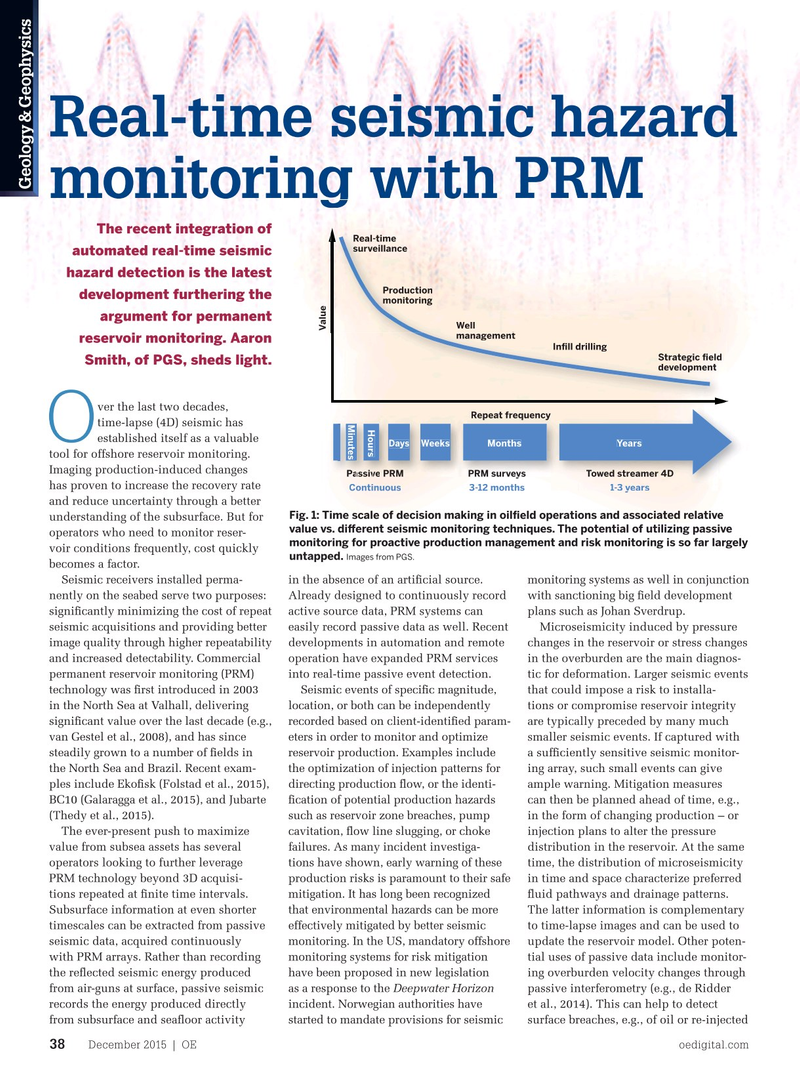
Page 36: of Offshore Engineer Magazine (Dec/Jan 2015)
Read this page in Pdf, Flash or Html5 edition of Dec/Jan 2015 Offshore Engineer Magazine
cuttings at an early stage.
In order to be useful for reservoir man- agement and risk mitigation, information from passive data needs to be available
Real-time seismic hazard within minutes of occurrence, hence requiring real-time acquisition and analy- sis. By their very nature, cabled PRM
Geology & Geophysics systems are already capable of doing that, monitoring with PRMmonitoring with PRM and in mature regions such as the North
Sea, broadband onshore connections
The recent integration of for real-time data transfer are already
Real-time surveillance in place. In the age of constant connec- automated real-time seismic tivity and on-demand remote system hazard detection is the latest monitoring, PRM systems then become
Production development furthering the just another component of the digital monitoring oil? eld. Prior to reaching wellhead and argument for permanent
Well
Value valve tree sensors monitoring produc- managementmanagement reservoir monitoring. Aaron tion infrastructure, PRM delivers in-situ
In?ll drilling
Strategic ?eld information of reservoir changes before
Smith, of PGS, sheds light.
development they reach the borehole.
Having real-time subsurface informa- ver the last two decades, tion at your ? ngertips for decision making
Repeat frequencyRepeat frequency
Minutes time-lapse (4D) seismic has quickly changes the value proposition
Hours
O established itself as a valuable of PRM systems. Passive monitoring not
Days Weeks Months Years tool for offshore reservoir monitoring. only makes much better use of the PRM
Imaging production-induced changes capital investment, but also opens up new
Passive PRMPassive PRMPassive PRMPassive PRMPassive PRMPassive PRM PRM surveysPRM surveys Towed streamer 4D has proven to increase the recovery rate applications for subsurface information
Continuous 3-12 months 1-3 years1-3 years and reduce uncertainty through a better in production monitoring and hazard
Fig. 1: Time scale of decision making in oil? eld operations and associated relative understanding of the subsurface. But for surveillance that provide signi? cant value value vs. di

 35
35

 37
37